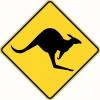I recently picked up a good user grade Record 050 combination plane. While the plane body is good shape and complete, the straight plow cutters need some serious attention. All seem to have been freehand sharpened by previous users/owners. Most are skewed with a wide variety of bevel angles. This is particularly true of the smaller irons. I have recently begun hollow grinding chisels and plane irons and was wondering if plow plane cutters can be hollow ground and then honed on water stones. Would it better (less risky?) to regrind the bevels with sandpaper using an Eclipse style jig and then hone on the stones? My first thought was that plow plane irons would be very similar to chisels, but I thought I would appeal to the collective for thoughts/advice before I jump in.
The best I can tell the 050 is circa 1950s with the original tungsten steel cutters.
Thanks,
Tim






 Reply With Quote
Reply With Quote








